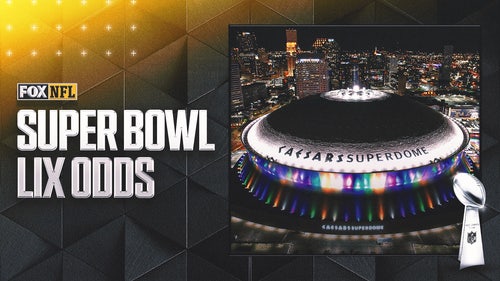
Here's how Jeremy Maclin became expendable with the Chiefs
What's bizarre about wide receiver Jeremy Maclin's release in Kansas City is not that it happened, but when it happened. Instead of cutting Maclin in March, the Chiefs allowed him to partake in five OTA sessions, at the risk of owing him his full $10 million salary in the event of a serious injury. They did this because, according to Jason Fitzgerald of OverTheCap.com, cutting Maclin after June 1 meant the Chiefs could divide his $7.2 million in dead money over the next two years (as opposed to taking the whole hit this year).
At the time of Maclin's release, the Chiefs had $3.5 million in cap space and still had to sign their top three draft picks: QB Patrick Mahomes, DE Tanoh Kpassagnon and RB Kareem Hunt. That costs about $4.5 million, and many teams like to have a $5 million cushion for emergency spending. The only contract besides Maclin's that could have been dumped for a cap savings of more than $5 million was Alex Smith's. Kansas City's other option was to dump a trio of mid-level players.
It's possible something else happened behind the scenes, given that Maclin called this a “crazy business” on Twitter after learning of the move, and Smith was “shocked.” But let's not dive any further into speculative detail. The bottom line: Maclin is a quality No. 2-caliber receiver who was making No. 1-type money on a team that really doesn't need a No. 1-type receiver to begin with.
Maclin's only big season of production was 2014 under Chip Kelly, when he had 1,318 yards on 85 catches. He then hit free agency and got a five-year, $55 million deal from the Chiefs. (He wound up making $23 million over two years.) The money wasn't surprising; Maclin is hardly the first player to have big numbers in his contract year and then get paid accordingly. What was surprising is that it was Andy Reid who wrote the check (so to speak).

Reid's West Coast-style offense is very scheme-driven. His play designs are what dictate which receivers get open and get targeted. Very rarely do the Chiefs ask receivers to line up and just beat defenders one-on-one. Instead, Reid builds plays that exploit predicted coverages. You don't need expensive receivers to do this, just reliable ones. Chris Conley and Albert Wilson types. (And to really drive the point home, you could argue that you don't need an expensive quarterback, either. A steady, cautious veteran like Smith will do. You can use your cap savings at quarterback to load up your defense.)
Of course, no offense can win simply through crafty play designs. If that were the case, every team would run that system. You still need mismatch-makers. Maclin wasn't that. He's good at many things but great at none, a quality target but not someone defenses tailor gameplans for.
The guy defenses do gameplan around is Travis Kelce, who led all tight ends in receiving last year. As a pass catcher, Kelce defeats linebackers in coverage every time, safeties most of the time and even top-shelf cornerbacks some of the time. Any specialty plays Reid draws up will be built around him.
Or, they'll center on receiver Tyreek Hill. The NFL's most explosive rookie of 2016 played 57 percent of the Chiefs' offensive snaps in the second half of last season. The Chiefs want to make him a down-to-down starter. Naturally, Hill, whose speed and quickness are off the charts, would become more than just the gadget weapon he's been. However, that gadgetry is what helps make him a matchup nightmare. Hill's 2017 cap number: just under $600,000.
Take money out of the equation and certainly the Chiefs would be better off with Maclin than without him. As it stands, Hill, Conley and Wilson are the only wideouts on the roster with meaningful NFL experience. It's a thin and, overall, average group.
But that's the tricky part about pro football. It's not how good you are, it's how valuable you are relative to your price tag.
This article originally appeared on











